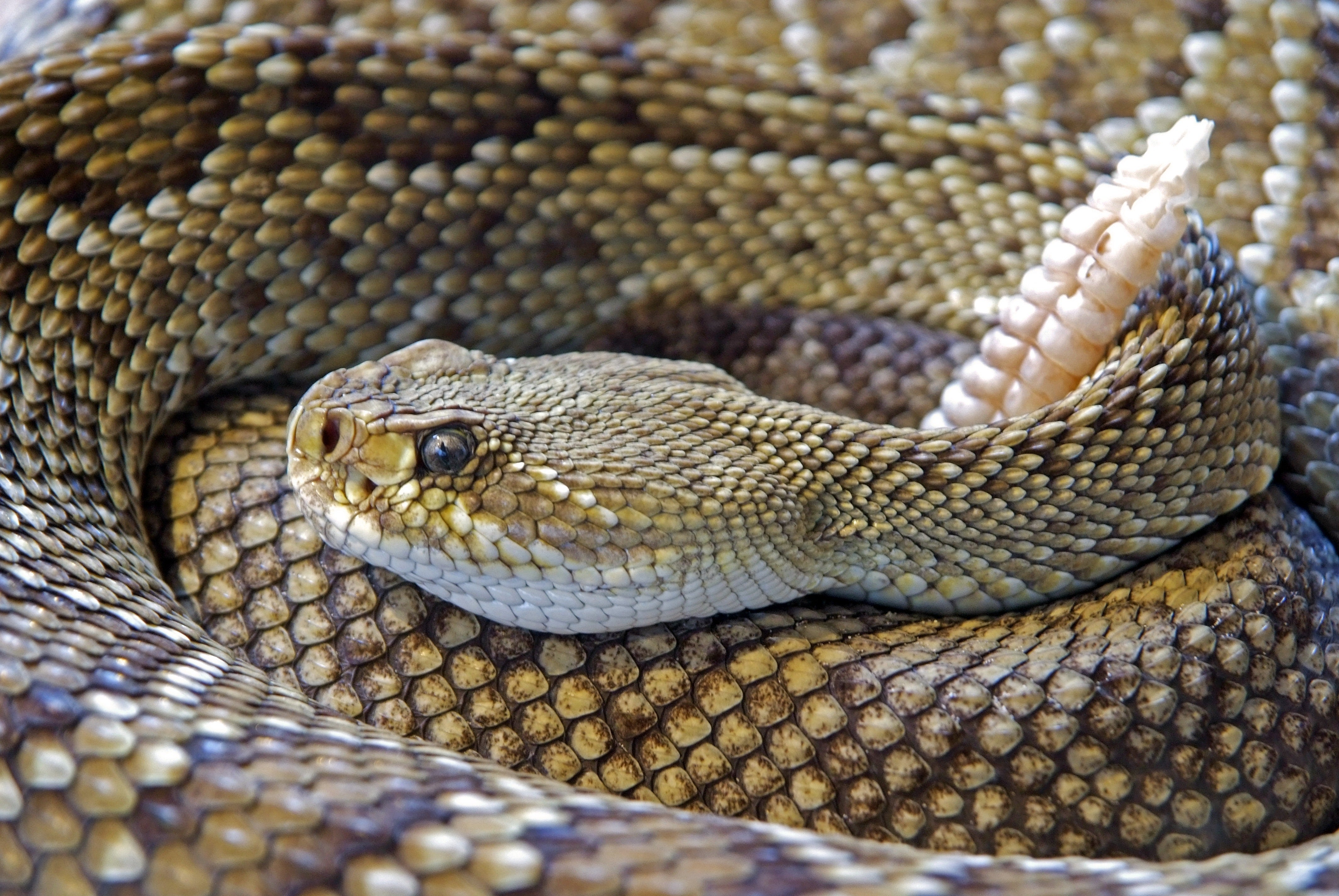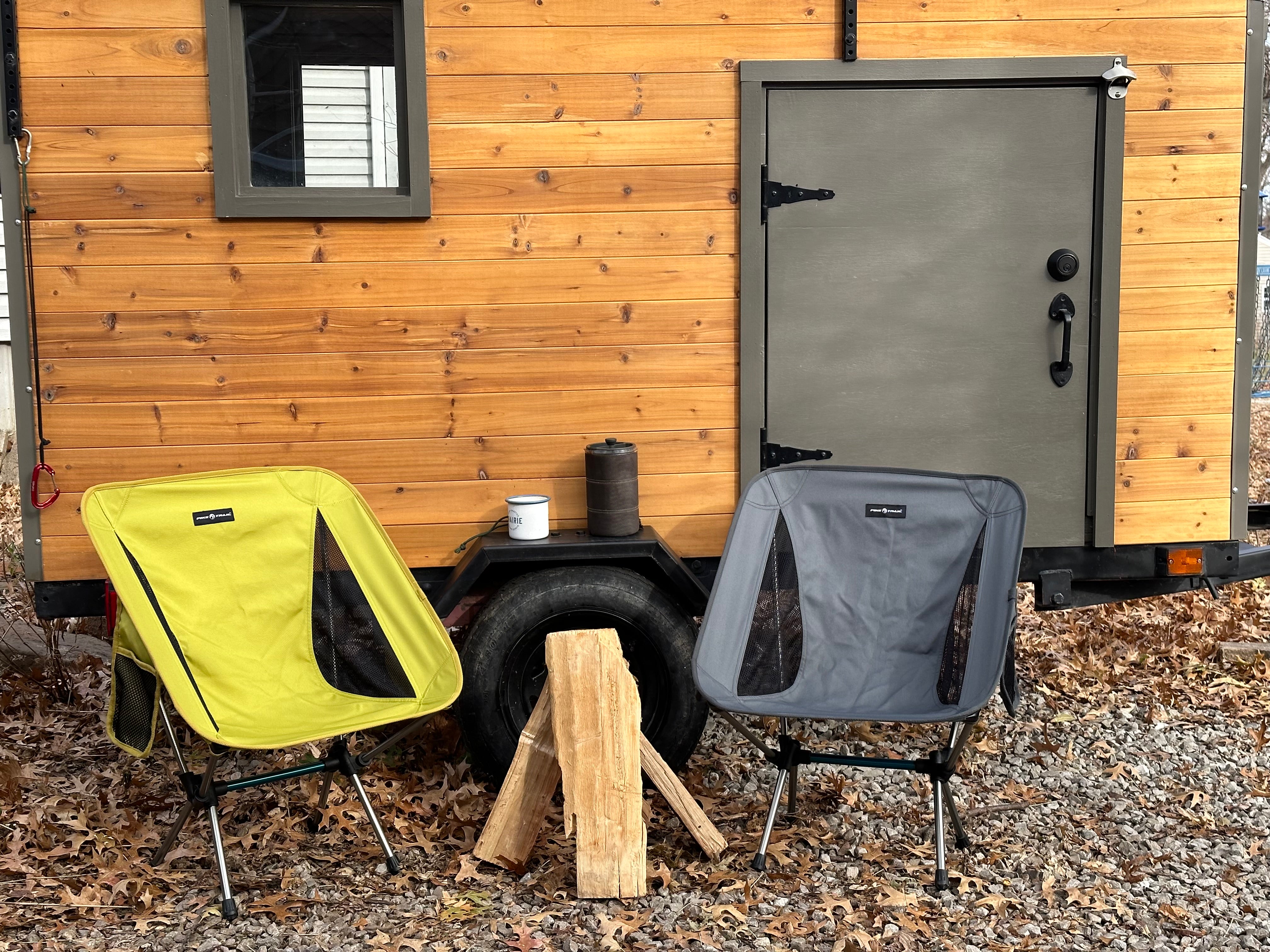Snakes are incredible reptiles with beautiful patterns and their ability to live in some of the most rugged and diverse terrains on the planet. They are still wild animals for their awesomeness, and several species are venomous. While the rule of thumb for snake experts is: that a snake is dangerous only if you plan on bothering it. Identifying venomous snakes on the trail can give you peace of mind while hiking and, in case of a bite, a better understanding of what to do next.
What is a venomous snake?
Calling a snake "poisonous" isn't correct. The venom injected by a bite is what can injure a human, so venomous is the correct terminology.
Types of Venomous Snakes
There are four venomous snakes in the United States: rattlesnakes, copperheads, water moccasins, and coral snakes.
Rattlesnakes are found in warmer climates from the country's east to the west coast. Categorized by their rattle tail, these snakes can strike a distance of 1/3rd their body length. Rattlesnakes don't always rattle, but the rattle will always be present. The diamondback rattlesnake will have a diamond pattern down its spine.

Figure 1 One of our customers sharing the trail with a rattlesnake
Copperheads are smaller snakes compared to rattlesnakes growing no more than three feet. Ranging from reddish-brown to tan, copperheads exhibit an hourglass pattern on their bodies. Copperheads are found in the eastern US to Texas and are often located in leafy areas near water. Most snakes will freeze when approached, and most bites from copperheads come from accidentally stepping on them.
Water moccasins or cottonmouths inhabit wet and swampy areas of the southeast. Like the copperhead, they are not aggressive and can often be confused for non-venomous snakes due to their dark coloration. Water moccasins will open their mouth when threatened, showing the white inside; this is where the name cottonmouth comes from. Water moccasins swim and will occasionally snatch fish from unlucky anglers.
Coral snakes stand out from the snakes on the list. Found in the eastern US, The bright colors of coral snakes make them easy to spot and also the easiest to distinguish from other non-venomous species like the king snake. Unlike the coloration of the rest of the snakes, coral snakes are always in the pattern of red and yellow bands touching each other. The pattern of the eastern king snake is similar but the red and black rings touch, making this limerick popular for hikers in the south "Red on yellow kills a fellow, red on black a friend of Jack."

Figure 2 Notice the red to yellow on this coral snake.
How to determine if a snake is venomous
Venomous snakes will have a more angular-shaped head because of the venom-producing glands in the jaws. Pit vipers like the rattlesnake, copperhead, and water moccasin all have heat-sensing pits near the front of their snout, this may be hard to see, especially on a darker-colored snake, but it is characteristic of them still. The eyes of snakes are also indicative of how dangerous they are. Venomous snakes have narrow vertical pupils, whereas non-venomous snakes will have rounded pupils.

Figure 3 While we can't see the eyes, the triangle head and pits are visible on this rattlesnake.
Common sense will keep you safe with the various ways to identify the venomous species of snakes. Firstly if you see a snake, leave it alone. More people are bitten by snakes while playing with them than in any other situation. Secondly, plan your route to avoid snaky habitat. Swampy, marshy areas are great habitats for water moccasins, and rocky outcroppings are a top spot for rattlesnakes. Third, dress correctly for snakes. Snake proof gaiters are an excellent way to keep your legs safe from snake bites and any thorns and branches that may try and bust your shins. The Pike Trail snake gaiter is light enough to wear in any weather, and with full coverage, to your calf, you are safe from even the biggest snakes.

Figure 4 The Pike Trail snake gaiter, don't leave home without them.
Avoiding snakes is the best method to avoid being bitten; however, having a good knowledge base of snake identification and proper snake gear will provide safe adventure in the snakiest of places.






